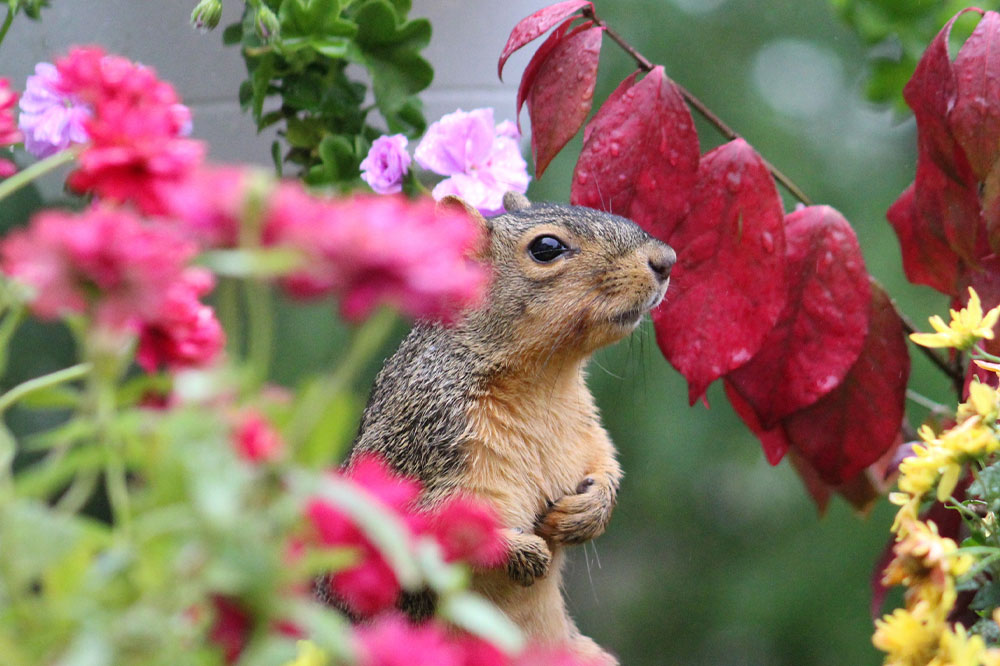Comprehensive Exploration of Plants and Wildlife: Their Vital Roles in Ecosystems and Human Life
This comprehensive article explores the vital roles of flora and fauna in maintaining ecological balance, supporting biodiversity, and benefiting human life. It details their definitions, importance, ecological functions, and threats, emphasizing the need for conservation efforts to protect Earth's natural heritage for future generations.

An In-Depth Exploration of Plants and Wildlife
Our Earth is a complex and vibrant system comprising both living and non-living elements, collectively forming a rich tapestry of ecosystems. These elements are broadly classified into biotic components—such as plants and animals—and abiotic components like mountains, water bodies, deserts, and atmospheric conditions. While non-living features shape the physical landscape, it is the biotic components—flora and fauna—that breathe life into our planet, supporting ecosystems and defining biodiversity. These living organisms are not only vital for maintaining ecological balance but also directly impact human health, economy, and overall well-being. Understanding the intrinsic importance of flora and fauna is essential for environmental conservation and sustainable development. Let’s delve deeper into the definitions, roles, and significance of plants and wildlife in our world.
What Are Flora and Fauna? An Introduction to Key Biological Components
To truly appreciate the significance of flora and fauna, it is fundamental to understand what these terms mean. Both are integral parts of ecological studies and conservation efforts, representing the living aspects of our environment. Recognizing their differences and interconnections helps us comprehend their roles in natural processes.
Understanding Flora
The term 'flora' originates from Latin, referencing the goddess of flowers, symbolizing plant life. In broad terms, flora encompasses all kinds of plant life found across various habitats—from lush forests and grasslands to aquatic environments and urban landscapes. This includes not only native vegetation but also cultivated plants, fungi, algae, and other organisms traditionally classified as plants. Flora varies dramatically based on geographic location, climate, altitude, and environmental conditions. For example, tropical rainforests teem with diverse plant species, while deserts sustain drought-resistant succulents. The category of flora covers a wide spectrum—from towering trees, shrubs, grasses, mosses, ferns, to herbs and fungi. It also includes economically important plants cultivated for food, medicine, and ornamental purposes, as well as invasive or unwanted species, such as weeds, which can disrupt native ecosystems. Plants in the flora category perform crucial functions, including providing oxygen, supporting food chains, and serving as raw materials for various industries.
Understanding Fauna
The term 'fauna' refers to the collective animal life present within specific regions or ecosystems. Its etymology traces back to the goddess of fertility and the mythological fauns, symbolizing forest spirits. Coined by the renowned botanist Carl Linnaeus in the 18th century, the concept of fauna categorized the myriad animal species into easily recognizable groups. Fauna encompasses everything from insects, birds, fish, mammals, reptiles, amphibians, to microbial life—collectively forming a vital part of biodiversity. These animals are classified into various groups such as avifauna (birds), pisci fauna (fish), microfauna (microscopic organisms like bacteria and protozoa), and cryptofauna (species that are rare or yet to be fully discovered). Modern taxonomy continues to refine these categories as new species are discovered and classified. Fauna plays essential roles in pollination, seed dispersal, pest regulation, and maintaining ecological stability. Their interactions with flora underpin the health and sustainability of ecosystems worldwide.
The Critical Importance of Flora and Fauna for Ecosystem Integrity
Understanding the functions and importance of flora and fauna highlights their pivotal roles in supporting life on Earth. These biotic components are tightly interwoven into the fabric of ecosystems through intricate relationships and shared dependencies. Plants produce oxygen through photosynthesis, a process fundamental to animal respiration, while animals contribute to the cycling of nutrients, carbon, and other elements vital for maintaining atmospheric and soil health.
Maintaining Ecological Balance
Healthy ecosystems rely on the balance between flora and fauna. Plants stabilize soil with their root networks, prevent erosion, and act as natural water filters, enhancing water quality and reducing risks associated with floods and landslides. Conversely, animals help control pest populations, disperse seeds, and contribute organic matter that enriches soil fertility. These processes foster biodiversity, resilience against environmental changes, and the sustainability of natural resources.
Sources of Nourishment and Food Security
Earth’s biodiversity provides the foundation for food security and nutritional well-being. Vegetation supplies fruits, vegetables, grains, nuts, and medicinal plants that sustain human populations. Many animals depend on plants for food, while humans have domesticated crops and livestock for economic sustenance. In addition, animals like bees, birds, bats, and insects facilitate pollination and seed dispersal, ensuring the proliferation of various plant species. This interconnected food web is vital for maintaining biodiversity and securing持续able food supplies across generations.
Environmental Protection and Climate Change Mitigation
Forests, grasslands, and other vegetative cover serve as vital natural barriers against environmental hazards. They prevent soil erosion, regulate water cycles, and buffer the impacts of storms, floods, and landslides. Trees and plants absorb carbon dioxide during photosynthesis, helping mitigate climate change. Roots stabilize soil and reduce runoff, filtering pollutants and preserving water quality. These natural systems also support aquatic biodiversity by maintaining habitats for fish, amphibians, and water-dependent species.
Medicinal and Pharmaceutical Significance of Flora and Fauna
Many traditional medicine systems worldwide have relied on plant extracts and animal products for centuries. Modern pharmaceuticals continue to derive critical medicines from flora, such as penicillin from fungi or morphine from poppies. Plants contain compounds that combat inflammation, infections, and chronic diseases, making them invaluable in medical research. Conservation of medicinal plants and animal species is vital for ongoing health innovations and healthcare advancements.
Economic and Cultural Value
Wildlife and plant-rich environments boost local and national economies through ecotourism, sustainable harvesting, and related industries. Iconic species like elephants, tigers, pandas, or exotic bird populations attract tourists, generating income, employment opportunities, and infrastructure development. Many indigenous cultures also have deep spiritual and cultural connections to native flora and fauna, reinforcing the importance of conservation efforts.
Threats to Flora and Fauna and Conservation Challenges
Despite their importance, flora and fauna face numerous threats from human activities. Habitat destruction due to deforestation, urbanization, and agriculture reduces available habitats for countless species. Pollution contaminates soil, water, and air, harming delicate ecosystems. Illegal poaching and wildlife trafficking threaten iconic species, pushing many toward extinction. Climate change exacerbates these threats, altering habitat ranges and disrupting migration patterns. Protecting these vital resources requires concerted global efforts, including habitat preservation, legal protections, breeding programs, and raising public awareness. Each of us has a role in conserving the natural treasures that sustain life on Earth.




